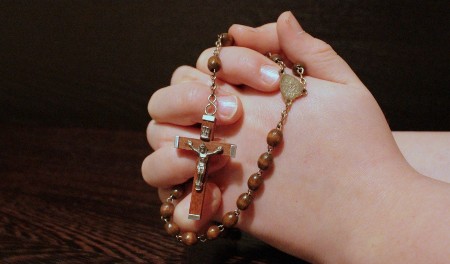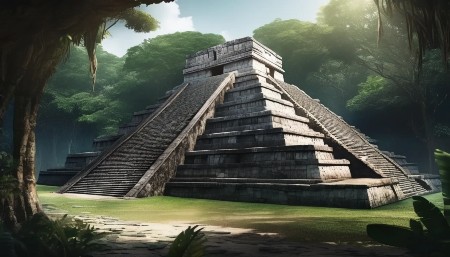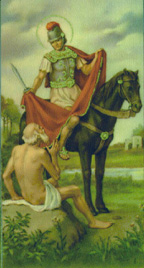We ask you, humbly: don't scroll away.
Hi readers, it seems you use Catholic Online a lot; that's great! It's a little awkward to ask, but we need your help. If you have already donated, we sincerely thank you. We're not salespeople, but we depend on donations averaging $14.76 and fewer than 1% of readers give. If you donate just $5.00, the price of your coffee, Catholic Online School could keep thriving. Thank you.Help Now >
Trujillo
FREE Catholic Classes
Diocese comprising the Departments of Lambayeque, Libertad, Pinra, and the Province of Tumbes, in North-west Peru, formed by Gregory XIII, 13 April, 1577, as suffragan of Lima, an arrangement confirmed by Paul V in 1611, when he appointed Alfonso de Guzman first bishop. The city of Truxillo (8000 inhabitants), formerly very flourishing, was founded in 1535 on the Río Muchi in the Valley of Chimu by Gonzalo Pizarro, who named it after his native place. It is the capital of the Department of Libertad, so named because Trujillo was the first Peruvian city to proclaim its independence from Spain. Most of the houses are but one story high, on account of frequent earthquakes, the severest of which occurred in 1619, 1759, and 1816. Its university was erected in 1831, a college having been founded there earlier in 1621. Near the city lie the ruins of the Gran Chimu, known originally as ChanChan — Chimu being the title of the Indian sovereign — one of the most stupendous extant monuments of a departed civilization. They extend over twelve miles north and south, and six miles east and west, and recall a highly civilized race — the Muchoen — which fell before the Incas. One may still see the ruined palace and factories, a necropolis, walls nine metres high, and a labyrinth of houses and pyramidal sepulchres ( huacas ), the most remarkable of which are the Toledo, Esperanza, and Obispo, the latter being 500 feet square and 150 high. From these ruins, over £5,500,000 in gold were recovered by the Spaniards. The Muchoen had reached a high degree of perfection in metal-work and in the art of decorating pottery, many specimens of the latter being unsurpassed since the days of early Greece. An account of the ancient religion has been preserved by Antonio de la Calancha , Augustinian prior of Trujillo in 1619; the chief deity was the moon ( Si ), her temple ( Si-an ) situated near the Río Muchi having had an area of about 42,000 square yards. A grammar of the native language — Mochica — now dead, was compiled by Padre Fernando de la Carrera (Lima, 1644). Diocesan statistics: 102 parishes ; 350 churches and chapels ; 160 priests ; 2 boys' colleges ; 3 girls' high schools ; there are communities of Franciscans (2), Conceptionists, Carmelites, Poor Clares, Dominican Tertiaries, and Lazarists, the latter having charge of the seminary. The Catholic population numbers about 581,000. The bishop is Mgr. Carlos García Irigoyen, b. at Lima, 6 November, 1857, edited the "Revista católica", founded "El amigo del clero", succeeded Mgr. Manuel Jaime Medina, 21 March, 1910.
Join the Movement
When you sign up below, you don't just join an email list - you're joining an entire movement for Free world class Catholic education.
-

-
Mysteries of the Rosary
-
St. Faustina Kowalska
-
Litany of the Blessed Virgin Mary
-
Saint of the Day for Wednesday, Oct 4th, 2023
-
Popular Saints
-
St. Francis of Assisi
-
Bible
-
Female / Women Saints
-
7 Morning Prayers you need to get your day started with God
-
Litany of the Blessed Virgin Mary
The Power of the Rosary: Why Praying the Rosary Matters for Catholics
-

Lasers Reveal Hidden Mayan City of Valeriana with 6,500 Structures in Mexico
-

Embracing Peace and Unity in a Time of Division
-
The 'Black Legend': Historian Argues Anti-Catholic Bias in Spanish Conquest Narratives
-
This Catholic Hero Who Fought Against Communism Should Be Released Immediately
Daily Catholic
 Daily Readings for Monday, November 11, 2024
Daily Readings for Monday, November 11, 2024 St. Martin of Tours: Saint of the Day for Monday, November 11, 2024
St. Martin of Tours: Saint of the Day for Monday, November 11, 2024 Prayer for Deceased Veterans: Prayer of the Day for Monday, November 11, 2024
Prayer for Deceased Veterans: Prayer of the Day for Monday, November 11, 2024- Daily Readings for Sunday, November 10, 2024
- St. Leo the Great: Saint of the Day for Sunday, November 10, 2024
- Evening Prayers: Prayer of the Day for Saturday, November 09, 2024
![]()
Copyright 2024 Catholic Online. All materials contained on this site, whether written, audible or visual are the exclusive property of Catholic Online and are protected under U.S. and International copyright laws, © Copyright 2024 Catholic Online. Any unauthorized use, without prior written consent of Catholic Online is strictly forbidden and prohibited.
Catholic Online is a Project of Your Catholic Voice Foundation, a Not-for-Profit Corporation. Your Catholic Voice Foundation has been granted a recognition of tax exemption under Section 501(c)(3) of the Internal Revenue Code. Federal Tax Identification Number: 81-0596847. Your gift is tax-deductible as allowed by law.






 Daily Readings for Monday, November 11, 2024
Daily Readings for Monday, November 11, 2024 St. Martin of Tours: Saint of the Day for Monday, November 11, 2024
St. Martin of Tours: Saint of the Day for Monday, November 11, 2024 Prayer for Deceased Veterans: Prayer of the Day for Monday, November 11, 2024
Prayer for Deceased Veterans: Prayer of the Day for Monday, November 11, 2024

